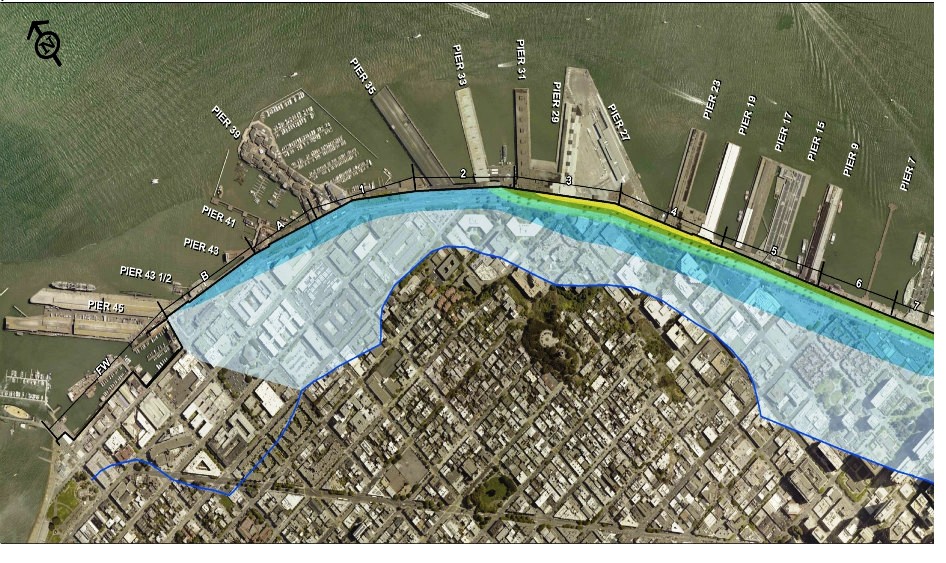San Francisco Begins Fortification Process of 100-Year-Old Seawall

The city of San Francisco announced May 4 that it will invest $8 million over the next two years to begin fortifying it's iconic, 100-yr-old seawall. The city says the end result will be a seawall that is more resilient and prepared to protect an area that stretches from Fisherman’s Wharf and Telegraph Hill to South Beach and Mission Creek against the dual threats of earthquake and sea level rise.
The announcement of the Seawall Initiative comes a few weeks after the Port of San Francisco released an Earthquake Vulnerability Study that revealed that most of the seawall is built over Young Bay Mud, a weak, saturated, and highly compressible marine clay that tends to amplify earthquake shaking and is susceptible to earthquake induced lateral spreading and settlement. Additionally, the fill used to create the land behind the seawall is susceptible to liquefaction.
The study includes an economic analysis which shows that $1.6 billion in assets are at risk from earthquake damage, and that the seawall supports $2.1 billion of economic activity annually.
San Francisco’s seawall underpins the Embarcadero and piers along the waterfront, and provides flood protection to the downtown. Port Interim Director Elaine Forbes said in a recent press release that the Seawall Initiative will define and prioritize sections of the seawall that will be improved to mitigate seismic risk, protect key infrastructure and improve life safety.
The initial $8 million investment will allow the Port to advance technical studies and engineering feasibility, engage stakeholders and the public in decision making, seek other sources of funding, and conduct project environmental review, say Port officials.
The Port's analysis estimates that costs to significantly improve the resiliency of the entire three miles of seawall and waterfront will be around $2 - $3 billion. This includes what the project team considers as the most promising mitigation options to fully improve earthquake resilience of the northern waterfront.
Project highlights would include ground improvement of the seawall foundation using jet grouting techniques; a combination of structural retrofits and replacement of bulkhead wall and wharf structures; mitigation of liquefaction in The Embarcadero using stone columns; and select utility replacement and relocation.
With consideration of sea level rise, the Port has estimated costs could reach $5 billion to fully incorporate adaptation measures needed for the next 100 years. While the study considers waterfront resilience needs, there is an urgency to advance seawall seismic strengthening efforts given that a major earthquake could occur at any time and is very likely to occur within the next 30 years, say port officials.
In October 28, 2014, the Port hired GHD/GTC JV, a joint venture to lead a team of geotechnical and civil engineers, and cost estimating, economics and coastal engineering professionals to conduct a 3-part Earthquake Vulnerability Study of the Northern Waterfront Seawall.
Port staff provided a briefing on the first part of the study, geotechnical conditions, in October, 2015. Part 2 produced a Vulnerability Assessment, and Part 3 presents a range of conceptual solutions. This report provides an overview and draft findings of the entire study.
The Port hired COWI and Langan, engineering firms with expertise in waterfront structures, to peer review the engineering vulnerability analysis and project solutions. The Port says the study is a draft and will be completed by June of this year.
